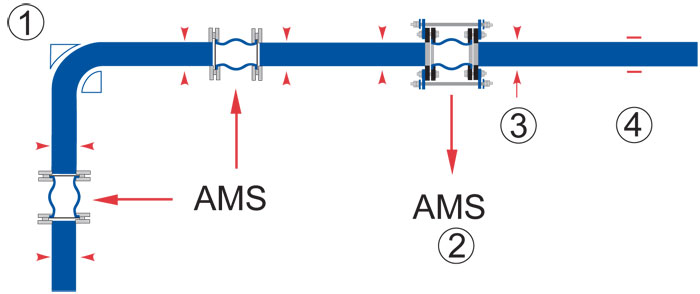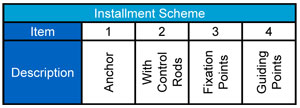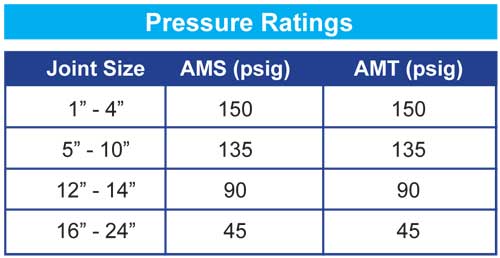Flexible Expansion Joint Applications



Applications
Control Rods are used to prevent an excessive extension or compression of the expansion joint which could damage the expansion joint. In general when there are high pressure risks (starting a pump…) or when wide temperature fluctuations occur, control rods should be used.
* * *
Control rod unit MUST be installed when pressure (test, surge, operating) exceeds rating shown in this chart.
*Contact Factory for information on our Control Rods.

Mounting Instructions
1) The alignment of the piping system should be adjusted and secured with fixation points as close as possible on each side of the expansion joint at a distance less than 3 times the pipe’s nominal diameter.
2) These fixation points must be installed when mounting an expansion joint with control rods or in a case of an elbow pipe. If there is considerable distance between 2 fixation points, guiding points can be installed in order to support and guide the pipe (cf. installation scheme)
3)(a) When installing, take care the rubber expansion joints don’t support compression or extension due to the weight of the upstream or downstream pipe.
Mounting Order:
1 – Upstream pipe; anchor
2 – Downstream pipe; anchor
3 – Expansion joint.
3)(b) When installing the rubber expansion joint take care (specially for type AMU) that it must not be twisted in any case.
2) These fixation points must be installed when mounting an expansion joint with control rods or in a case of an elbow pipe. If there is considerable distance between 2 fixation points, guiding points can be installed in order to support and guide the pipe (cf. installation scheme)
3)(a) When installing, take care the rubber expansion joints don’t support compression or extension due to the weight of the upstream or downstream pipe.
Mounting Order:
1 – Upstream pipe; anchor
2 – Downstream pipe; anchor
3 – Expansion joint.
3)(b) When installing the rubber expansion joint take care (specially for type AMU) that it must not be twisted in any case.
4) Verify that the upstream and downstream pipe alignment does not deviate more than 1/8″ (3 mm) and that the expansion joint does not support heavy weight.
5) Verify that the surfaces coming in contact with the joint are perfectly clean and without cutting edges (pipe) thus avoiding damage to the joint surface.
6) Insert the bolts on the arch side of the joint, thus avoiding direct contact with the rubber.
7) If welding is carried out within close range, cover or dismount the expansion joint.
8) Do not paint or coat the joint with insulation.
9) During installation, the precompression should not exceed 5 mm.
10) Store the joint in a flat position avoiding humidity and extreme temperatures.
Notes:
Bolt tightness should be checked daily within the first month after services and checked periodically thereafter.
5) Verify that the surfaces coming in contact with the joint are perfectly clean and without cutting edges (pipe) thus avoiding damage to the joint surface.
6) Insert the bolts on the arch side of the joint, thus avoiding direct contact with the rubber.
7) If welding is carried out within close range, cover or dismount the expansion joint.
8) Do not paint or coat the joint with insulation.
9) During installation, the precompression should not exceed 5 mm.
10) Store the joint in a flat position avoiding humidity and extreme temperatures.
Notes:
Bolt tightness should be checked daily within the first month after services and checked periodically thereafter.


